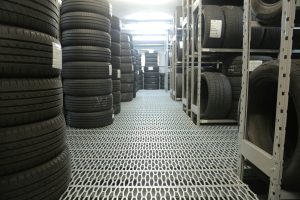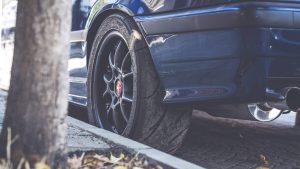Runflat tires are gaining attention in the automotive industry for their added safety. These tires allow a vehicle to keep moving even with a puncture or low air pressure.
In this article, we explain what runflat tires are, how they work, their advantages, and disadvantages to help you make an informed decision.
What Are Runflat Tires?
Runflat tires are designed to stay functional temporarily even after a puncture or loss of air pressure. This means, in case of a tyre puncture while driving, you can continue for a limited distance without having to replace the tire immediately. Most runflat tires allow drivers to continue driving for up to 80 kilometers at a maximum speed of around 80 km/h, depending on the manufacturer and tire specifications.
These tires use stronger and thicker sidewalls compared to regular tires, allowing them to support the vehicle’s weight even when the tire pressure is reduced. With this design, runflat tires don’t completely fail after a puncture.
How Do Runflat Tires Work?
Runflat tires work by using reinforced sidewalls. When a tire loses air pressure due to a puncture, these thick sidewalls support the vehicle’s weight temporarily. This allows the car to keep moving steadily without worrying about a sudden blowout or collapse.
However, it’s essential to remember that the speed and distance of driving must be reduced to ensure safety and minimize tire and rim damage.
In addition, most runflat tires require a Tire Pressure Monitoring System (TPMS) to work optimally. This system alerts the driver if the tire pressure drops, allowing immediate awareness of the issue and appropriate action.
Advantages of Runflat Tires
Runflat tires offer several benefits that enhance vehicle safety and driving experience:
1. Additional Safety
Runflat tires are designed to avoid dangerous situations, such as losing control of the vehicle due to a sudden blowout. The ability to keep driving after a puncture allows drivers to find a suitable place to change the tire or seek help without the need for an abrupt roadside stop.
2. No Immediate Need to Change Tires
With runflat tires, drivers don’t need to change the tire immediately after a puncture. This is especially useful when you’re far from a repair shop or in bad weather conditions. You can keep driving to a safer location or the nearest workshop to fix the issue.
3. Extra Storage Space
Vehicles using runflat tires usually do not require a spare tire, providing additional storage space in the trunk for other items.
Disadvantages of Runflat Tires
Despite their advantages, runflat tires have some drawbacks that should be considered before deciding to use them.
- Higher Cost: One of the main drawbacks of runflat tires is their higher price compared to regular tires. Due to more advanced technology, the cost of manufacturing and installing these tires is also higher. Thus, drivers should consider the cost aspect before opting for runflat tires.
- Driving Comfort: Runflat tires generally have thicker, stiffer sidewalls, which can reduce driving comfort. Drivers may feel more vibrations when driving over rough or bumpy roads compared to regular tires.
- Limited Distance and Speed: While you can continue driving after a puncture, the distance and speed are limited. Most runflat tires can only last for around 80 kilometers after a puncture, and drivers must ensure not to exceed the specified speed to prevent further damage.
Who Should Use Runflat Tires?
Not every driver needs runflat tires, but for some situations, they may be suitable. If you frequently drive in remote areas or where roadside assistance is rare, runflat tires provide an added level of safety.
Additionally, if you often drive in bad weather or at night, runflat tires can help you avoid the risk of having to stop on the roadside in unsafe conditions.
However, if you prioritize driving comfort and don’t want to spend extra on tire maintenance, regular tires may suffice. It is essential to assess your driving needs before making a decision.
Maintenance and Replacement of Runflat Tires
Like regular tires, runflat tires need regular maintenance to ensure proper function. Make sure to check tire pressure frequently and adjust according to the manufacturer’s recommendations. While runflat tires can better withstand punctures, they still need to be replaced once they wear out or reach the end of their lifespan.
Moreover, if you have driven with a punctured runflat tire, it is crucial to replace it promptly. Driving with a punctured runflat tire beyond the recommended distance may cause damage to the rim and affect vehicle stability.
Conclusion
Runflat tires are an excellent choice for enhancing vehicle safety, especially if you often face the risk of tire punctures. This technology allows you to keep driving even after a puncture, giving you more time to find a suitable place to change the tire.
However, before opting for runflat tires, you need to consider the cost, driving comfort, and your driving needs.





